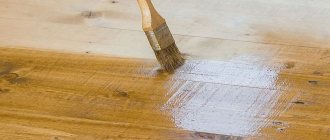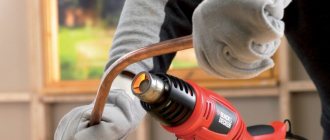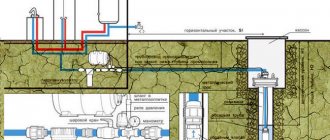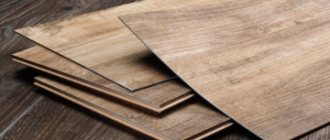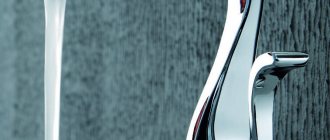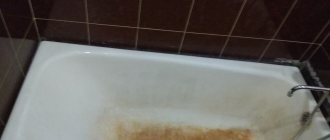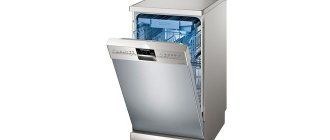Today it is impossible to imagine a modern kitchen without household appliances that make the life of the housewife easier. Manual labor was gradually replaced by convenient household appliances that save time and keep your home perfectly clean. A recycling device capable of processing food waste is gaining great popularity. This kitchen shredder is easily built into the sink, convenient to use and is an excellent alternative to a trash can. By installing a disposer in your kitchen (as a food waste shredder is called), you will forever rid your home of unpleasant odors and significantly increase the hygiene of the room.
Comparison of characteristics of the presented models
The main characteristics of the presented models are collected in a table that will help you navigate when choosing the right product.
| Brand | Power, W | Speed, rpm | Volume, ml | Price, rub |
| Unipump BH 51 | 375 | 4000 | 700 | 9 565 |
| STATUS PREMIUM 100 | 390 | 1480 | 1050 | 10 950 |
| STATUS PREMIUM 150 | 390 | 1480 | 1200 | 13 950 |
| In Sink Erator Evolution 200 | 380 | 1425 | 1180 | 28 400 |
| ZorG (ZR-38 D) | 380 | 3000 | 1320 | 10 700 |
| MIDEA MD 1-C56 | 560 | 2600 | 1180 | 8 541 |
| BONE CRUSHER BC 610 | 475 | 2600 | 800 | 15 590 |
Food waste chopper (disposer)
I saw that people here are interested in such a thing, so, being on a wave of joyful excitement from the gift that my beloved husband gave me, I want to share my review. True, this is about 1/28 of the gift that he gave me at the beginning of the year (the main one was the kitchen, bought, brought, assembled, hung and arranged, with everything connected and built in with his own hands from the lighting to the hood with stove in 4 days), but this other story:)
So here it is. Our family has always consumed enough vegetables, fruits and herbs, and recently even more has appeared. We regularly drink freshly squeezed citrus, vegetable and fruit juices, eat fruits plain and puree them, prepare salads or stew vegetables, so a sink filled with peelings and/or pulp is a common occurrence and quite frequent throughout the day. It’s a hundred times easier for me to peel a mountain of different vegetables and fruits than to remove all the tops afterwards (I’ll take this opportunity to show you a knife that, despite the name “Tomato Peeling Knife,” copes with peels of any thickness on any Victorinox vegetable and fruit, and has already served well 5 years old). I won’t explain how unpleasant the process of scooping peels into the trash is, and, moreover, there’s no need to tell you what a leaking garbage bag is - everyone faces this on a regular basis. My husband, seeing my torment, repeatedly started talking about the disposer and how cool it would be to have one. I don’t know why, but I actively resisted his appearance in our kitchen. Apparently, subconsciously I was against the fact that American housewives dream of this literally as an essential item in the kitchen, and for me, American does not always mean the best. When he almost convinced me, I got to the bottom of something else: how environmentally friendly is this type of waste disposal? For me this is a point. It was explained to me, a boring person, that compared to a trash can, where all this would rot in a bag for a long time (waste recycling in Russian realities is far from the level of civilized countries), here everything will go down the drain in a finely dispersed form and, therefore, the decomposition processes will take much longer. faster. I mentally agreed, but “Baba Yaga is still against it” :) They didn’t ask me anymore, my husband made it smarter: he ordered this thing from an online store and presented it with a fait accompli. As a result, when he assembled the kitchen step by step, he also built a chopper into the sink. True, I chose a sink with two compartments (that’s what we originally planned), although nothing prevents us from putting it in a regular sink. The first thing we did in the new kitchen at night, after finishing cleaning, was to squeeze out orange juice and remove the halves of the skins in a chopper :)
I will not go into the technical advantages and disadvantages, I will describe the everyday pros and cons, so that those who are still in doubt about whether they need it or not can decide.
Obvious advantages: the trash can no longer stinks and is taken out every three days (before this, we sometimes ran to the trash bin even twice). All organic matter, with some exceptions, is disposed of directly into the sewer system. This is relevant for houses without a garbage chute and, for obvious reasons, especially where there is a garbage chute. It’s easier for me personally, at least in the fact that when going out through the heavy doors of the entrance for a walk with a child, a sled (bicycle/snekokat), I don’t have to drag this bag every day.
Cons (mostly imaginary):
- quite a high price. BUT it pays off with the above-mentioned advantages;
- takes up a lot of space under the sink - I agree: there may not be enough space for the usual large bucket or any household items that are usually stored under the sink;
— sometimes a stinking sensation is felt (apparently, the digestion processes of the disposer do not occur completely and it is necessary to give more time to digest the residues with a sufficient amount of water). But even this can be eliminated with a tight plug; Reinstalling it in a sink with one compartment when moving and without a plug did not worsen anything, there are no unpleasant odors;
— banana skins cannot be thrown into our shredder due to their viscosity and sliminess, fibrous celery stalks and light onion skins. This chopper won't even take huge bones. And we decided that we would not feed the disposer date and apricot seeds, despite the fact that they are also of organic origin - he chews them too long and difficult. We have the Bone Crusher BC 900 delux .
Somewhere in the reviews, after purchasing and using it, we read something like the following: “We didn’t realize how convenient this thing was until we started using it. Now we are thinking about purchasing a household compactor for solid waste.”
There is no limit to perfection!:))
What to look for when choosing?
- When choosing a chopper for the kitchen, preference is given to high-power devices. They cope better with solid waste (bones, nuts, grains, etc.). These models are more expensive in price.
- An ideal option for a family of 4 people is a medium-power disposer.
- The volume of the crushing chamber is important. The bigger, the better. This affects the quality of the shredder.
- The time it takes to process the amount of waste depends on the rotation speed. Higher speed allows you to clean your sink faster.
- When purchasing a product, use our advice.
Benefits of Sink Disposers
The key benefits of installing a kitchen food waste disposer under the sink are:
Hygiene. The disposer processes food waste and rids the kitchen of the unpleasant smell of a garbage can and the risk of midges and insects;
Blockages. Food waste is crushed by several stainless knives, which move at a speed of 2500 revolutions, and turn all the garbage into a fine substance. This will protect the sewer from blockages.
Types of sink dispensers
Based on the type of operation, two classes of household food waste shredders can be distinguished:
Mechanical ones are considered obsolete and are practically not produced. No electricity is used; the cutting knives are driven by water pressure. Therefore, for apartments located in the old building, where there are often problems with water pressure, this type of disposer is not suitable. It is also not suitable for installation in a country house, where water supply can be carried out according to a schedule;
Electric - powered by electricity. The rotation speed of the cutting discs is constant and does not depend on water pressure. These are powerful and reliable disposers.
No. 10. Can a grinder clog a drain?
At the dawn of the appearance of shredders, there was a huge problem to convince everyone that such a device could not harm the operation of sewer networks and treatment facilities. Inventor John Hammes spent many years to prove the absolute safety of this waste disposal option and finally received a patent for his invention.
More than 80 years have passed since then, and today there are still concerns that the use of a disposer can harm sewer networks. At the exit of a high-quality shredder, the waste turns into a mass of small particles, without fibers, as if you yourself took and grated the product on a fine grater. Can this clog the sewer? More likely, a blockage will occur if something falls into a drain hole that is not protected by any mesh without a grinder. And yes, this method of disposing of organic waste will not harm the septic tank in any way.
The article was written for the site.
Tags:Sewage, Kitchen
Installing a kitchen disposer
Each shredder comes with installation instructions, which must be strictly followed.
If you have basic knowledge of plumbing and electricity, you can try installing the device yourself. But if in doubt, it is best to use the services of a specialist.
First, you need to check whether the device includes the following necessary parts:
- hex wrench;
- rubber gaskets;
- pneumatic button;
- connection with sink and siphon;
- outlet outlet mounting flange with 2 screws for fastening the main flange of the heat exchanger;
- threaded outlet;
In addition to the standard parts and tools included in the kit, you will need additional:
- screwdriver;
- adjustable wrench;
- hacksaw;
- pipe pliers;
- putty;
- electrical cord;
- electric or pneumatic switch for models that do not have this part included;
- materials for installing drain pipes (the quantity depends on the specific case);
- machine for welding polypropylene pipes (socket);
Installation rules:
- Prepare all necessary materials, tools and equipment.
- Turn off the electricity and water supply in the apartment.
- Follow safety regulations.
Blitz tips
- for the drain pipe of the device - it will become clogged and quickly become unusable.
- The best drain pipe is welded specifically for your sink and shredder.
- Additional water consumption when using the device will be about 3% of the total amount of water consumed per month.
- for a waste recycling device . In specific cases, you can adapt it, however, the best option would be to choose a high-quality sink with a hole of 89-90 cm.
- Some manufacturers recommend using a separate electrical line for the shredder.
- After the device has finished operating , always leave the water tap running for 10-20 seconds longer.
- If you are processing meat trimmings or fish waste, then after turning off the device, you need to add detergent to the drain hole and leave the water running for another 40 seconds.
- Chopping lemon will help disinfect and remove unpleasant odors At the same time, you don’t need to turn on the water first, wait until the lemon is processed and then turn on the water for 20 seconds.
- clean the pipes by grinding seeds or watermelon rinds with the addition of a small amount of soda, or with special detergents.
- clean pipes no more than once every 2-3 months.
- Do not clean the device or pipes with abrasive cleaning agents.
- To prevent grease from sticking to the surface of the pipes during the disposal process, it is necessary to mix the grease with detergent before turning on the device.
- After loading waste into the shredder , it must be processed immediately, otherwise some products, such as dough, may stick to the walls of the chamber and the device will have to be cleaned.
Shredder InSinkErator Evolution 100
Sasha
- I want to share my joy - the evolution 100 shredder is simply a miracle! Once installed, you don’t have to worry about the drain getting clogged; all leftover food can easily be thrown into the sink. Now there is no garbage in the sink, no smell from the bucket, just a great purchase.
Nikolai
- The impression about the device was twofold. Pros: convenient installation, easy start-up, aesthetic appearance. The downside is the noise during operation, it doesn’t seem to make much noise, but it’s distracting. I also didn’t like the fact that large waste is not always completely recycled. But overall the device is not bad.
Dasha
- I really liked the device, it grinds literally everything! Even heads of corn, and very quickly. The knives in it rotate in different directions, this makes grinding even better. We are happy, it’s a convenient thing.
Maksim
- It took me a long time to choose and settled on the sink erator . Now I think maybe I should have taken another one. It makes a lot of noise and vibrates. Especially if you turn it on when the tap is off. Moreover, after a couple of months of use, an unpleasant smell appeared. I had to wash it with special means.
Darius
- I recently installed a sink erator, but the pipe became clogged almost immediately! I don’t understand what’s wrong, they didn’t grind anything particularly hard, but I already had to clean it with the key from the kit. Manufacturers say that this shouldn’t happen, I don’t understand what’s wrong with the device.
Operating rules
First you need to turn on the water, then the chopper.
In order for the device to last longer and work efficiently, you must follow the rules of its operation. To work you need :
- open the tap and turn on the water;
- enable disposer;
- direct food waste into the sink drain;
- as soon as the grinding process is completed, turn off the device;
- turn off the water after a few minutes.
The sink disposer is intended solely for the disposal of food waste. If used incorrectly, even the most powerful and expensive models can cause serious damage.
Do not put in the drain:
- metal, glass, plastic objects;
- plastic bags;
- threads, hair, feathers, laces;
- fish scales;
- rags.
The device perfectly grinds vegetable and fruit scraps, pieces of fish and meat, nut shells, and small bones.
Features of the technology
Based on the principle of operation, a kitchen chopper is similar to a centrifugal juicer. A disk is placed inside the device, and the walls resemble the surface of a grater. In active mode, the device grinds waste into porridge, which is then washed away with a stream of water.
The disposer is installed in the sink instead of a siphon. The outlet of the household appliance is connected to the sewer pipe. Pros of a kitchen chopper:
- Reducing waste volume. On average, the amount of waste is reduced by 50%.
- Convenience. Before use, there is no need to individually clean each plate and then wash the dishes.
- No smell. There will not be a bin for household waste in the kitchen. Thanks to the disposer, debris will stop accumulating in the sewer pipes and the stench will disappear.
- Safety. The thoughtful design of the kitchen sink grinder will not harm the user. A person does not have access to moving parts.
Disposers are appropriate in private houses with individual sewerage. After crushing, food waste is mixed with water and then falls into a storage tank. Anaerobic and aerobic bacteria begin to process and purify the dirty liquid.
A kitchen shredder in the sink does not cope with all waste. The manufacturer indicates a list of prohibited products in the instructions for a specific model. For example, you should not put long fibers (hair, textiles), fish scales or poultry skins into the device, otherwise the pipes will become clogged. The equipment will not cope with:
- non-food products (glass, plastic);
- plastic bags;
- large bones;
- hard shell;
- vegetable peel.
Correct installation is the key to many years of stable operation. Insufficient sealing of joints or installation with distortions complicates the work of the disposer. Using it at maximum power will quickly damage the equipment.
For waste crushing Source sky-water.ru
For a kitchen shredder, the drain will have to be rebuilt in the sink. Pipes that are too narrow and corrugated easily become clogged. To prevent the formation of traffic jams, it is necessary to install structures with smooth internal walls.
Using a kitchen chopper increases the amount of water used. Moisture is needed not only to flush crushed waste down the drain, but also to cool the internal mechanism. On average, fluid consumption increases by 100 liters.
What should not go into the shredder?
Some waste may clog the chamber and stop the device from working.
List of main prohibited waste:
- Fibrous items (banana peels, onion peels, herbs).
- Large bones (beef, pork).
- Corn cobs.
- Threads, hair, veins - anything that can wrap around the shaft.
- Rags, corks, metal are inorganic objects.
- Packaging – polyethylene, rubber products.
Here you can add some items that can and should be recycled:
- Soft waste (dough, pasta, cereals).
- Fruit and vegetable peelings.
- Hard objects (egg and nut shells, seeds, hardened bread).
- Small bones.
- Napkins, cigarette butts.
No. 1. The principle of operation of the chopper
The metal or plastic body of the disposer contains rotating disks and crushing cams, which press the incoming waste against rigid and stationary grater walls. The inlet is attached to the drain in the kitchen sink, and the outlet is attached to the sewer pipe. The incoming waste is crushed and ground, after which it enters the sewer system. To start, simply press a button (electric models), and some models are equipped with a remote activation mechanism.
The mechanism can be powered by an electric motor or even by the water itself flowing from the tap. Devices of the latter type are usually called mechanical or hydraulic.

